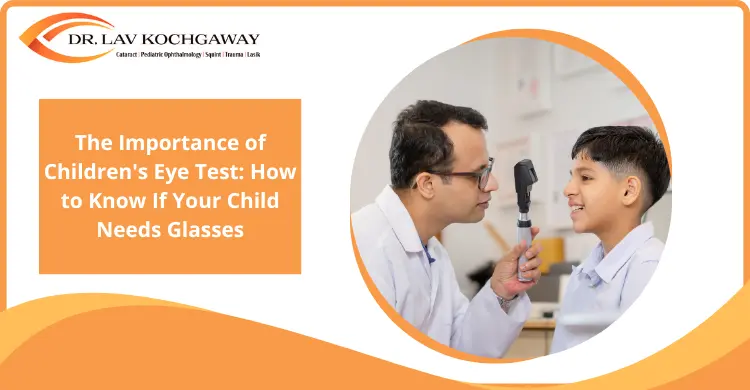
Children rely on their vision for nearly every aspect of their lives, whether it’s learning, playing, or discovering the world around them. Vision problems are a significant public health concern, studies show that 19 million children under 15 are visually impaired, and 1.4 million suffer irreversible blindness, half of which could be preventable. Unfortunately, many children may not realize they have vision problems as these issues develop gradually. This makes regular children’s eye tests crucial, as early detection ensures timely treatment and gives children the best possible foundation for both their education and daily activities.
Clear vision is crucial for a child’s growth, impacting everything from reading and writing to coordination and social interactions. Since many vision issues develop without obvious symptoms, early detection through routine eye exams ensures children have the visual skills they need to succeed.
Children’s eyes develop rapidly in the early years. Clear vision is essential for recognizing letters, numbers, and shapes, which are building blocks for literacy and cognitive skills. Poor vision can lead to learning difficulties, making eye exams and glasses necessary for some children to keep up in school.
Many childhood vision problems, such as lazy eye (amblyopia) and crossed eyes (strabismus), are easier to correct if caught early. If left untreated, these conditions can lead to permanent vision loss in one or both eyes.
Experts recommend the following timeline for children’s eye tests:
At 3 years: This is the mean recommended age for a child’s first eye checkup, emphasizing the importance of early detection.
Early eye exams are crucial to identifying potential vision problems that may affect a child’s learning and development. Regular checkups can help detect conditions such as refractive errors, strabismus (crossed eyes), or amblyopia (lazy eye), ensuring that timely intervention can prevent long-term vision issues. Early detection leads to more effective treatment options and better outcomes for children’s eye health.
Pediatric eye care is more comprehensive than a standard school vision screening. It evaluates multiple aspects of vision and eye health to detect any issues early.
Several vision problems may require glasses or corrective treatments:
Parents should watch for these common indicators of vision problems:
Children’s eye exams play a crucial role in their learning and development. Detecting vision issues early can prevent learning difficulties, eye strain, and long-term conditions like lazy eye or strabismus. If your child is showing signs of vision problems, book an eye exam today to ensure they have the clear vision they need to thrive in school and life.
Regular pediatric eye exams are essential for detecting vision problems early. If your child is experiencing any of the symptoms above, don’t wait, schedule an appointment as soon as possible.
Dr. Lav Kochgaway emphasizes the importance of early intervention to prevent long-term complications and support healthy vision development.